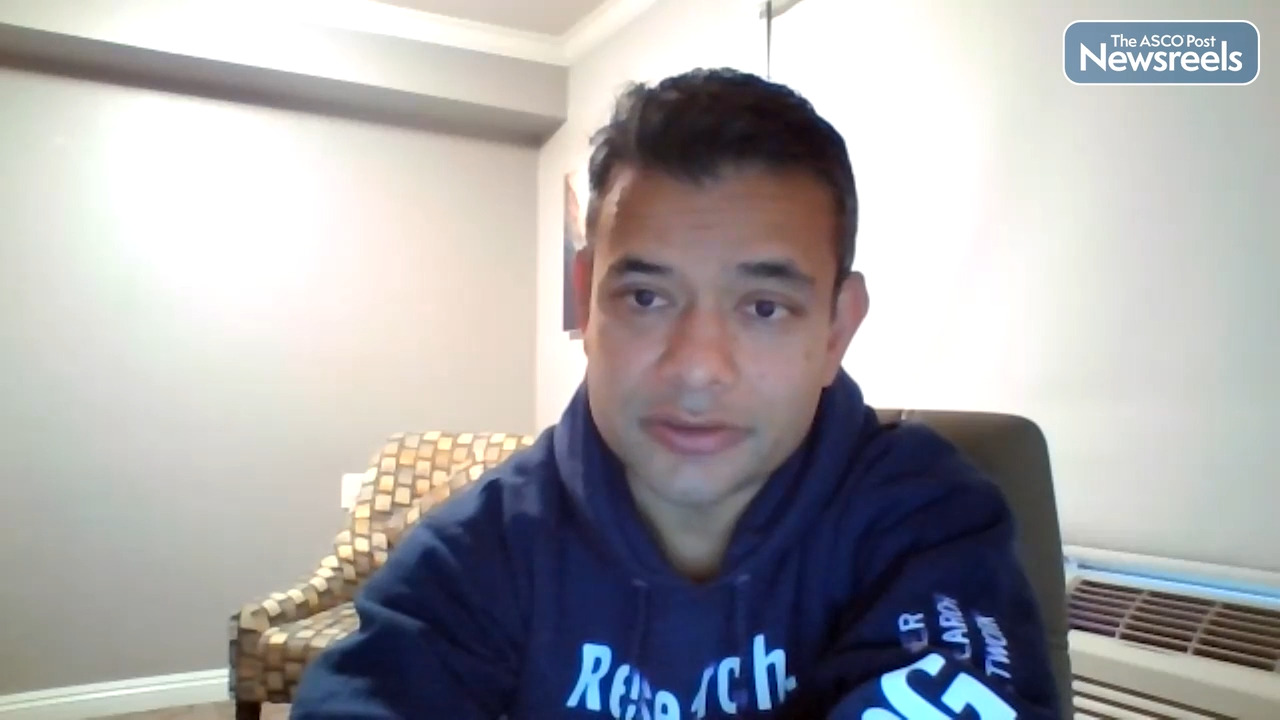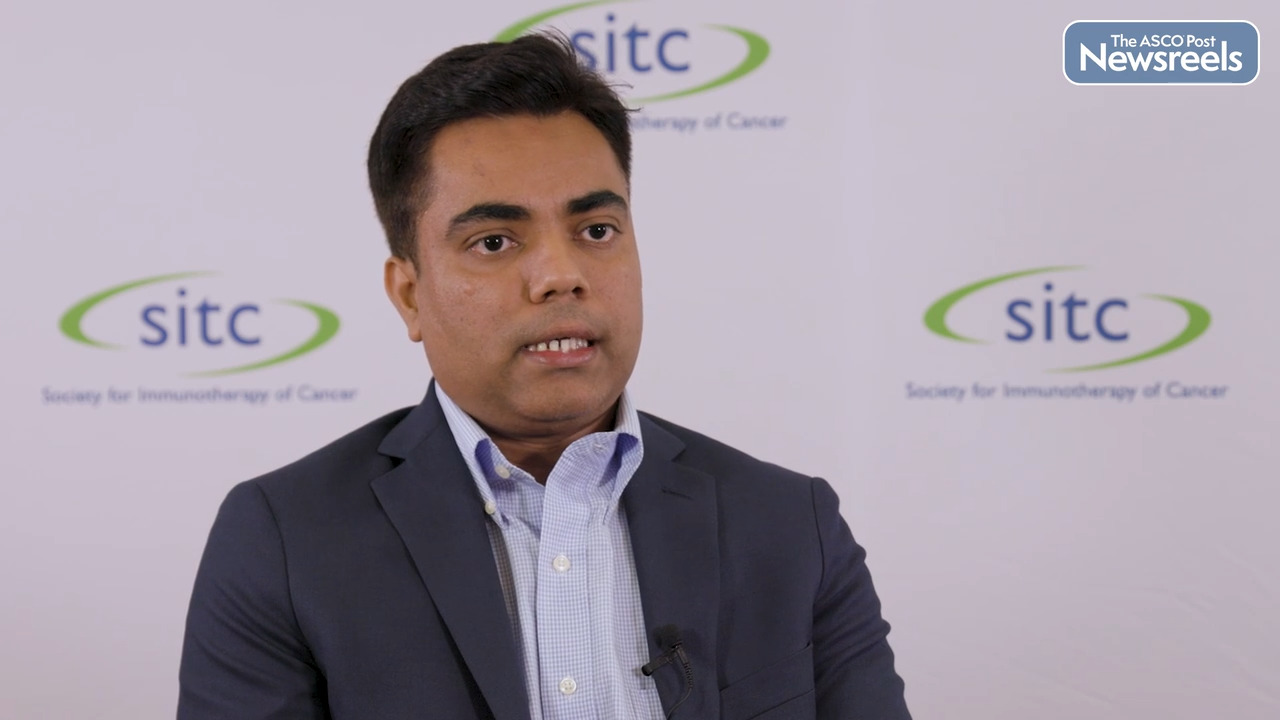Transcript
Disclaimer: This video transcript has not been proofread or edited and may contain errors.
First, as background, I'd like to give you a little bit of information about immunotherapy principles. Immunotherapy is different than tumor-targeted therapy because we're actually treating the immune system so that it can treat the cancer and because the activated immune system can target many tumor antigens simultaneously and deepen and broaden over time, it can cure patients with metastatic cancer. Therefore, the hallmark of effective immunotherapy is a tail on the Kaplan-Meier curve. In other words, the treatment ends, but the benefit persists and because of this impact on overall survival, anti-PD-1 based therapies have shown activity in 22 different cancer types and most of the early phase three trials comparing immunotherapy to standard therapies showed benefits in overall survival, leading to FDA approval. Because these anti-PD-1 based regimens were reasonably well tolerated, they served as a backbone for potential combination therapies with over 2,000 different combinations being studied currently.
Some of these combinations such as anti-PD-1 and anti-CTLA-4 antibodies have shown significant activity leading to approval in diseases such as melanoma, kidney cancer, non-small cell lung cancer, liver cancer, Merkel cell cancer, and other tumor types. A recent combination of anti-PD-1 plus anti-LAG-3 in the RELATIVITY-047 study showed activity similar to NIVO/IPI in patients with metastatic melanoma leading to its FDA approval in the spring of 2022 for patients with advanced melanoma.
On the other hand, some combinations, including three recent combinations in patients with melanoma showed no benefit in overall survival despite promising phase two data. These included studies of anti-PD-1 plus an IDO inhibitor, PEGylated IL-2, and an oncolytic virus called T-VEC. And because these dry wells are a waste of resources from both the pharmaceutical and patient and investigator perspective, which doesn't help the field, we sought to see whether or not there were any common issues with these phase three trials that led to their being negative.
So, rather than boiling the ocean, we decided to address this from the investigator's perspective, focus on anti-PD-1 based combinations, and those that involved anti-PD-1 with other immunotherapies. We wanted to create some sort of checklist to help investigators decide which phase three trials to open and which ones they were comfortable in exposing their patients to. So, we enlisted with the help of SITC, a task force to try to identify these common properties and we identified 12 different features that we'd like to see before a trial move forward to phase three in four categories. These included additive or synergistic biology, validity of preclinical models, single agent activity in preclinical and early clinical studies in the phase one and two data, whether they showed single agent activity in a clinical setting, randomization benefit in a phase two trial activity in standard of care PD-1, resistant tumors, activity in tumor types that don't typically respond to the anti-PD-1 pathway blockade responses that were durable, including lasting off treatment and agents that had non overlapping toxicity.
In the trial design category, translational studies linked to the trial integrated biomarker program and use of a optimal endpoint that was appropriate for immunotherapy, such as stopping treatment or a tail on a curve. When we looked at these 12 categories, we created some prioritization without showing activity in a randomized phase two or single agent activity, particularly if produced durable responses in an anti-PD-1 resistant setting, having the highest priority. So, in order to apply this checklist, an investigator considers the gestalt of high and lower priority items satisfied by the IO combination.
Generally compelling data from a randomized phase two trial or single agent activity of the combination partner in PD-1 resistant population leading to durable benefit might be sufficient to move forward. In contrast, lacking these multiple trial design or preclinical parameters are necessary to support moving forward to phase three. In the future, we'd like to assign numerical values to each checklist item and validate these in a retrospective prospective fashion with actual trials and hopefully influence drug development pathways and trial designed by other stakeholders in order to maximize the curative potential of these novel therapies.





